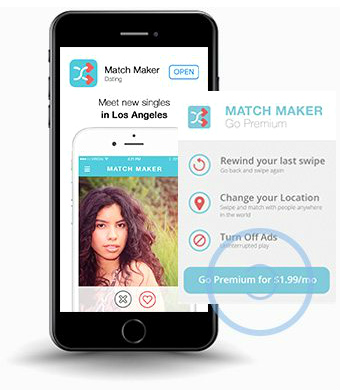Why do so many app marketing campaigns fail? App re-engagement marketing is key.
Your approach to marketing your app ultimately depends on the goals your team defines at the outset. App marketers decide which metrics will be most meaningful for measuring campaign performance. Right now, we’re in the midst of a shift away from using downloads as the marker of success in app marketing. Why? Because app install rates only tell part of the story.
What really matters is what people do after they install an app. Are mobile users engaging with your app in a meaningful way? Or are they installing it only to let it sit on their home screens or delete it soon after? Metrics like retention and conversion rates are proving to be much more useful in gauging the success of app marketing campaigns because they provide a richer view of user behavior as it relates to your bottom line.
Another reason some app marketing efforts fall short is a fundamental failure to re-engage. Building a user base is not a one-time endeavor. Nowadays, mobile users face all kinds of distractions. Average mobile users have approximately 36 apps installed on their mobile device, all vying for attention and precious storage space. So, it’s no wonder that approximately one-fourth (23 percent) of mobile users abandon an app after they install it.
But this does not mean marketers have to watch these mobile users go, merely hoping they change their minds. App re-engagement goes a long way toward retaining these hard-earned users.
How Re-Engagement Marketing Drives Conversions
How should marketers approach mobile app re-engagement? Serving highly targeted ads to dormant users is the first step. These dynamic ads, programmatically assembled based on user data, are personalized to match the demographics and mobile devices of their targeted recipients. Furthermore, deep-linking enables re-engagement ads to bring users back to the exact point at which they left off in the usage funnel with just a tap.
 So, a user who began booking a hotel room but never finished may see an ad for the very same hotel in their destination city. By tapping the re-engagement ad, they will link right to where they previously left off.
So, a user who began booking a hotel room but never finished may see an ad for the very same hotel in their destination city. By tapping the re-engagement ad, they will link right to where they previously left off.
The same principle applies for ecommerce apps, which utilize product feed retargeting to show mobile shoppers products likely to appeal to their wants and needs. Dating apps can re-engage installers by prompting them to make a profile, check their matches or subscribe to unlock more features.
Myths About Mobile App Re-Engagement
Many marketers focus primarily on acquisition, treating app re-engagement marketing as an afterthought. But the two strategies should go hand-in-hand for a robust way to attract and retain users. Part of the reason re-engagement is less popular than acquisition is because there are pervasive myths floating around. Here are three:
Myth #1: Re-engagement marketing is too expensive. According to one industry expert, “Strong data-driven [retargeting] advertising typically yields lower costs and higher conversion rates—usually at around 70 percent the cost of acquisition.”
Myth #2: Users left for a reason; they probably won’t want to come back. Although average mobile users have dozens of apps installed, they tend to use only a handful routinely. This doesn’t mean they dislike the apps they don’t use. Rather, it’s likely they lost track of their progress. The right reminder can get them right back into the funnel.
Myth #3: It’s a more efficient use of time to find new users. Lapsed users, while not currently engaging with your app, did show interest at one point. They may simply need a reason to re-engage. New users, on the other hand, are less familiar with your app—making them more of an ad spend gamble.
Long story short: Any type of app can benefit from effective app re-engagement marketing. It tends to be more cost effective than acquisition, while also boosting retention and conversion rates.





